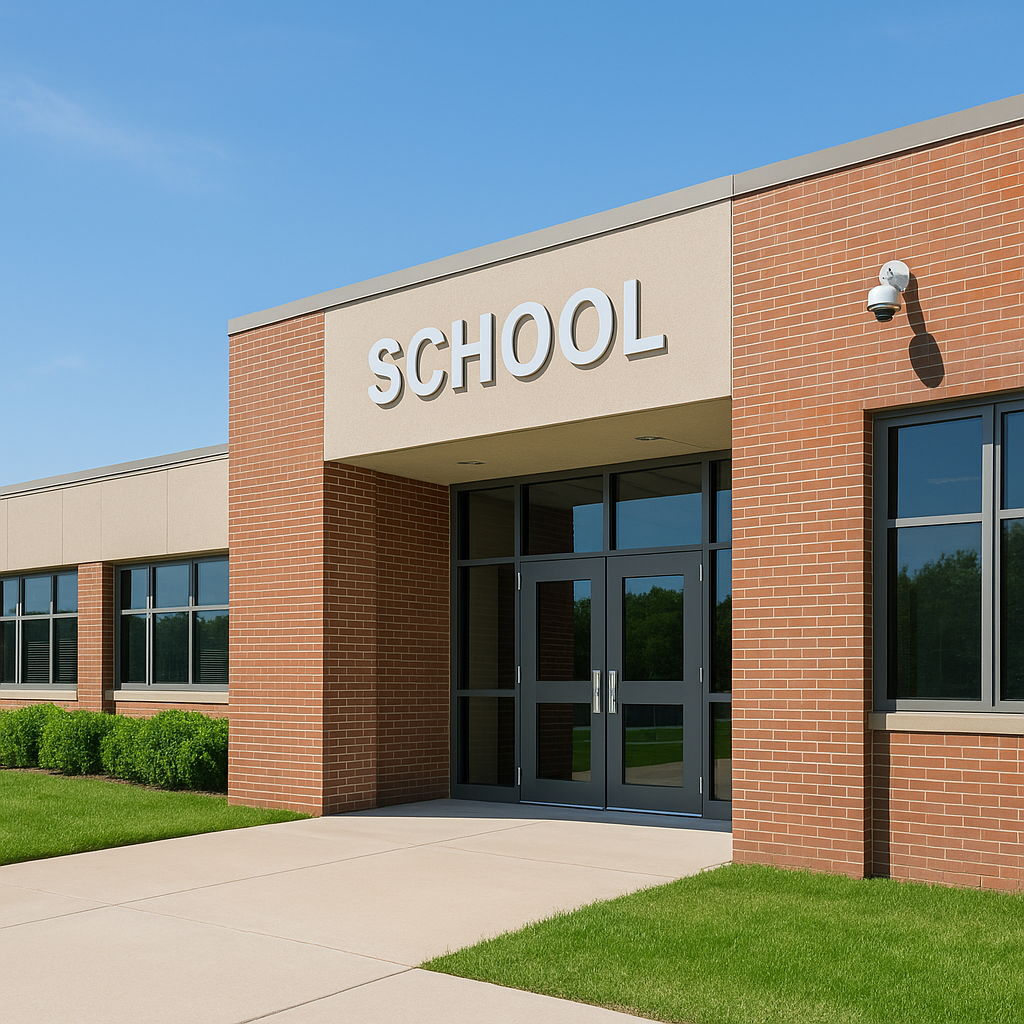Enhancing School Safety Across Central Virginia: Why Your District Needs a Security Consultant
School with smart security and risk assessment
TLDR:
As school safety concerns continue to rise across Virginia, districts in Charlottesville, Waynesboro, Staunton, Roanoke, Richmond, and Lynchburg face increasing pressure to protect students, staff, and campuses from a wide range of threats. This article explores recent school safety data, highlights the most common vulnerabilities schools encounter, and outlines practical steps districts can take to improve security. It also explains the value of working with a professional security consultant—and how our team can help your district develop a customized, effective, and sustainable safety strategy.
School safety is a growing concern nationwide—and here in Virginia, it deserves your attention now more than ever. With students, staff, and communities alike looking for safer learning environments, school districts across Charlottesville, Waynesboro, Staunton, Roanoke, Richmond, and Lynchburg must take proactive steps to protect every campus.
In this article, you’ll find key Virginia data on school safety incidents, practical tips to strengthen security, and insight into why professional security consulting is essential for districts that care about prevention, preparedness, and peace of mind.
⚖️ The State of School Safety in Virginia & the U.S.
Virginia’s School Safety Surveys & Trends
Virginia requires all school divisions to complete a School Safety Survey annually, reporting incidents of crime, violence, and disciplinary actions. Virginia Department of Education+2VA Criminal Justice Services+2
According to the 2020 Virginia School and Division Safety Survey, many schools reported needing more resources and training in threat assessment, emergency planning, and response. VA Criminal Justice Services
In a more recent iteration, the 2021 Virginia School Safety Survey shows that while many divisions adopted threat assessment practices, gaps remain in training, coordination, and resource allocation. VA Criminal Justice Services
A statewide study noted that the average number of threat assessments per school rose from 2.9 to 7.3 over several years, suggesting increased awareness—but also higher demand for skilled oversight and consistency. National Institute of Justice
National Data & School Incidents
In the 2021–22 period, the U.S. Department of Education’s School Survey on Crime and Safety documented numerous incidents of assault, theft, bullying, and weapon possession across public schools. National Center for Education Statistics
The rate of “exposure” to a school shooting—defined as a student attending a school where a shooting occurred—has climbed over time, rising from ~19 per 100,000 students (1999–2004) to ~51 per 100,000 in 2020–2024. KFF
In Virginia, firearms are the leading cause of death among children and teens, underscoring the need for prevention, detection, and protective strategies. Johns Hopkins Public Health
These figures show that threats in schools aren’t theoretical—they are real, evolving, and often unpredictable. School districts in your region must respond with intention, planning, and expertise.
Practical Tips to Strengthen School Safety Today
Here are some key strategies that districts should consider—whether now or as part of a multi‑phase security roadmap:
1. Implement & Standardize Threat Assessment Teams
Ensure every school has a trained threat assessment team (staff, mental health, law enforcement liaisons) using consistent procedures.
2. Layered Access Control & Entry Screening
Use vestibules, single‑point entries, visitor check-in systems, credential verification, and monitored access to reduce unwanted entries.
3. Surveillance & Analytics Upgrades
Install high-definition cameras with coverage of critical zones (hallways, parking lots, entry points). Use video analytics to detect loitering, unauthorized access, or suspicious behaviors.
4. Environmental Design & Lighting (CPTED)
Apply Crime Prevention Through Environmental Design—improve lighting, sightlines, eliminate hiding zones, control landscaping, and use secure fencing or barriers.
5. Drills, Training & Emergency Response Plans
Conduct regular active threat drills, evacuation simulations, reunification training, and tabletop exercises involving staff, students, and first responders.
6. Mobile Panic Alerts & Communication Tools
Provide systems (apps, panic buttons, silent alerts) so teachers or staff can instantly notify security or law enforcement during emergencies.
7. Coordinated Security & Mental Health Approaches
Recognize that safety is not just physical; integrate mental health support, counseling, conflict resolution, and student support systems to prevent escalation.
8. Regular Audits, Maintenance & Reviews
Security is never “done.” Audit policies, test systems, review incident logs, monitor upgrades, patch vulnerabilities, and adapt to changing threats.
Implementing these tips strengthens safety, but doing so without a holistic, trained framework can lead to gaps or missteps. That’s where a security consultant can be a game changer.
🔍 Why Your District Needs a Security Consultant (especially here in Central Virginia)
Expert Risk Assessments & Diagnosis
We systematically audit every campus—evaluating vulnerabilities across buildings, grounds, transportation, digital infrastructure, and more.Tailored Security Design & Implementation
Rather than generic “off-the-shelf” solutions, we design layered protection aligned with your district’s size, budget, population, and community expectations.Training, Protocol Development & Exercises
We prepare your personnel—administrators, teachers, security staff, and first responders—with scenario-based training, tabletop exercises, and drills.Integration of Technology & Systems
Our team ensures that surveillance, access control, alert systems, communication platforms, and analytics tools are coordinated and effective—not siloed.Ongoing Monitoring, Evaluations & Upgrades
We stay engaged post-implementation—conducting reviews, vulnerability scans, updates, and scaling as needs evolve.Liaison with Local Law Enforcement & Compliance
In our region, we bring local relationships (Charlottesville PD, Roanoke, Richmond, Lynchburg, Staunton area) and understand state regulations, Virginia Code, and reporting requirements.Balanced Approach to Safety & Student Well‑being
We prioritize methods that maintain trust, minimize disruption, preserve learning environment, and promote a culture of safety—not fear.
Districts that adopt consulting support often see:
Reduced incident counts (fewer break-ins, vandalism, unauthorized entries)
Improved emergency responsiveness
Lower long-term costs by avoiding reactive fixes or piecemeal upgrades
Stronger community confidence in your leadership
Ready to Make Safety Your District’s Strength?
From Charlottesville to Lynchburg, Richmond to Staunton—you don’t have to face school safety challenges alone.
Contact us today to arrange a Virginia School District Security Consultation & Risk Assessment. We’ll walk your campuses, map your vulnerabilities, and help you build a plan that protects students, staff, and community—while preserving the learning environment.
Let’s build safer schools together.

